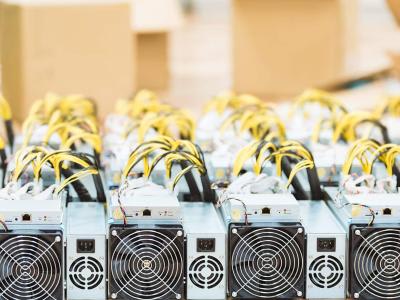Key takeaways
Author

There is no denying the popularity of cryptocurrencies in Latin America. According to a survey by credit card company Mastercard, just over half of consumers in the region have made a transaction using crypto assets. In addition, two-thirds want to be able to use crypto and traditional payment methods interchangeably day-to-day.
This is all in spite of crypto’s high volatility. Bitcoin – still the most popular cryptocurrency – continues to be a roller coaster. In 2022, the currency lost close to two-thirds of its value. Even today, it remains at less than half its peak in November 2021.
The continuing popularity is due, in part, to that very volatility. “For some, it’s like going to a casino,” explains José Gregorio Argomedo, Information Technology Partner at RSM Chile. You never have to worry about missing the surge in crypto; there will be another soon (after the crash).
For others, though, particularly business users, stablecoins have also been essential to crypto’s enduring appeal. Pegged to traditional fiat currencies, most often the US dollar, they offer the advantages of other crypto without the volatility.
Quicker, cheaper and safer
According to one Argentina-based crypto exchange speaking earlier this year, stablecoins represent more than half of its crypto trading volume. Latin American users can even now look to homegrown options; in August, Ripio, another Argentine exchange, which also operates in Brazil, Uruguay, Colombia, Chile, the US and Spain, launched the region’s first stablecoin, the ‘Criptodólar’, which promises to maintain a 1-to-1 parity with the US dollar.
For businesses and other users, the appeal is obvious, says Cipactli Jiménez, Fintech Consultant & Senior Crypto Trader with RSM Mexico.
“The advantage we have with a stablecoin is that when it is based on a cryptographic model, we can use blockchain technology for faster and cheaper transactions that are sometimes even more secure than traditional options,” he explains.
Traditional international transfers through regional banks can take days, weeks – or even months when problems occur. The fact that the bank usually guarantees the money only offers some comfort. Costs, meanwhile, mount with high volumes of transactions.
“Compare that to transactions made through blockchain, where you can send money in seconds and, instead of paying $30, it’s a few cents,” he says. They are also relatively simple to use.
“You just need two fundamental things: A digital wallet from which to send the money on one side and another one to receive it on the other end.”
At the same time, money stored in stablecoins linked to a currency like the US dollar benefits from its relative stability in a region with volatile domestic currencies and high inflation rates. According to a report by blockchain analysis firm Chainalysis, storing and sending remittances are the two main drivers of crypto adoption in Latin America. Stablecoins meet both requirements.
Not so stable
Even though stablecoins are not subject to the volatility associated with cryptocurrencies, their use is not entirely without risk.
The main danger, of course, is that they might not live up to their promise. While volatility is – or should be – taken for granted with normal cryptocurrencies, stablecoins offer something different, as the name suggests: the reassurance of a peg to another (more established) asset, such as a fiat currency. Yet, they do not always deliver.
In May 2022, stablecoin TerraUSD collapsed, breaking its peg to the US dollar. Over a week, the former fell from parity to just 10 cents. Today, it’s worth approximately one cent. It’s not alone, either. Other ‘stable’ cryptocurrencies to break their pegs, albeit less drastically, include TrueUSD in June 2023 and, before that, in March, USD Coin (USDC), which was hit by the collapse of lender Silicon Valley Bank in which the USDC creator, Circle, had some of its reserves.
Both are now back to parity (or at least near it) with the dollar, but such cases have dented some of the enthusiasm for stablecoins. They still offer lower costs and quicker transactions, but they’re not unique in that. It’s not just standard cryptocurrencies that can provide it; they also compete with well-established methods.
“The biggest rivals when it comes to the stablecoin models are probably credit card companies like MasterCard and businesses like PayPal”, says Jiménez. Without robust guarantees that they will retain value, the attractions of stablecoins are limited.
Regulatory reticence
Regulations that ensure the quality and quantity of reserves may tackle these issues, but that will likely take time. Crypto regulation is still in its infancy in most Latin American countries – although it varies widely.
Some countries are further on than others. Brazil, for instance, has introduced significant regulations for cryptocurrencies addressing money laundering, and in December 2022, its congress passed a law establishing guidelines for virtual asset services providers. These obligate trading platforms and virtual currency providers to appoint a central body to oversee operations and protect consumers. In January of 2023, Chile also passed a fintech law regulating alternative transaction systems, including crypto, with risk management and corporate governance requirements.
Perhaps best known, El Salvador was the first country to recognise Bitcoin as legal tender in June 2021, and in September of the same year, passed Legislative Decree No.57, introducing significant regulation and standards for crypto operators and platforms.
Elsewhere, though, there is often very little in the way of regulation. Mexico’s 2018 Fintech Law, for instance, introduced some obligations on the central bank to consider crypto, but no regulatory framework directly addresses them. Many countries lack expertise within government and the regulators.
For several countries, it has been hard to regulate the operation because they really don’t understand them.
There is something of a chicken or egg quandary, too. While regulation may encourage use, the reverse is also true. In at least some countries in Latin America, the use of crypto in the economy is still not extensive, and that’s why the regulations are not very developed.
When you can buy anything with your crypto wallet, the government will start realising they need to regulate the use of these currencies.
Familiarity is the biggest hurdle with accounting, too. The rules are fairly straightforward, with the main issue ensuring crypto assets are valued fairly (usually easier with stablecoin), but it’s still new to many firms.
It’s not complex, but it is new, and many companies need someone to demystify it for them.
Out of common sense, protect yourself and your business
The other main worry for users is security. The currencies themselves operate using robust cryptographic, confidential algorithms, according to Salvador González, Information Security Associated Director at RSM Mexico.
“Any weaknesses don't concern the nature of this technology,” he says.
Instead, there are two areas of concern surrounding security. The first is the exchanges and trading platforms where cryptocurrency holders change their digital currencies for fiat money or other assets. That’s where the majority of cyberattacks have been directed when it comes to the infrastructure supporting crypto and stablecoins.
More commonly than that, however, the users themselves are the weak link.
"Attackers go for the simple option,” says González. “They don't choose the difficult, well-protected paths; they target the simple ones with weaker security, and that's usually the users.”
As he explains, nothing inherent in the technology makes users of stablecoin or other crypto more vulnerable to attack. “A hacker could just as easily steal personal data or online banking details.” However, holding stablecoin does present another potential loss should security be breached.
Consequently, businesses using stablecoins can mitigate the risks by doing their due diligence on the stablecoin they opt for, diversifying holdings across several different coins, and choosing their exchange platforms carefully. The best protection, however, is closer to home – implementing the cybersecurity and training they should have in place already – much of it, says González, is common sense.
“For me, that’s the strongest tool that both businesses and individuals have to protect themselves. In conclusion, once risks have been adequately mitigated, stablecoins can still be an extremely disruptive factor for all.”




